579-49-7
| Name | (4-fluorophenyl)-thiophen-2-ylmethanone |
|---|---|
| Synonyms |
MFCD00044554
(4-fluorophenyl)-(thien-2-yl)ketone (4-fluorophenyl)-(thiophen-2-yl)methanone 2-(4-fluorobenzoyl)-thiophene (4-fluorophenyl)(2-thienyl)methanone p-fluorophenyl thien-2-yl ketone 4-Fluorophenyl 2-thienyl ketone EINECS 209-442-0 |
| Density | 1.279g/cm3 |
|---|---|
| Boiling Point | 314.7ºC at 760mmHg |
| Melting Point | 94-99 °C |
| Molecular Formula | C11H7FOS |
| Molecular Weight | 206.23600 |
| Flash Point | 144.1ºC |
| Exact Mass | 206.02000 |
| PSA | 45.31000 |
| LogP | 3.11820 |
| Index of Refraction | 1.59 |
Synonym:None Section 2 - COMPOSITION, INFORMATION ON INGREDIENTS
Risk Phrases: None Listed. Section 3 - HAZARDS IDENTIFICATION EMERGENCY OVERVIEW
The toxicological properties of this material have not been fully investigated. Potential Health Effects Eye: May cause eye irritation. Skin: May cause skin irritation. Ingestion: May cause irritation of the digestive tract. The toxicological properties of this substance have not been fully investigated. Inhalation: May cause respiratory tract irritation. The toxicological properties of this substance have not been fully investigated. Chronic: No information found. Section 4 - FIRST AID MEASURES Eyes: Flush eyes with plenty of water for at least 15 minutes, occasionally lifting the upper and lower eyelids. Get medical aid. Skin: Get medical aid. Flush skin with plenty of water for at least 15 minutes while removing contaminated clothing and shoes. Wash clothing before reuse. Ingestion: Never give anything by mouth to an unconscious person. Get medical aid. Do NOT induce vomiting. If conscious and alert, rinse mouth and drink 2-4 cupfuls of milk or water. Inhalation: Remove from exposure and move to fresh air immediately. If not breathing, give artificial respiration. If breathing is difficult, give oxygen. Get medical aid. Notes to Physician: Section 5 - FIRE FIGHTING MEASURES General Information: As in any fire, wear a self-contained breathing apparatus in pressure-demand, MSHA/NIOSH (approved or equivalent), and full protective gear. During a fire, irritating and highly toxic gases may be generated by thermal decomposition or combustion. Extinguishing Media: Use water spray, dry chemical, carbon dioxide, or appropriate foam. Section 6 - ACCIDENTAL RELEASE MEASURES General Information: Use proper personal protective equipment as indicated in Section 8. Spills/Leaks: Sweep up, then place into a suitable container for disposal. Provide ventilation. Section 7 - HANDLING and STORAGE Handling: Wash thoroughly after handling. Remove contaminated clothing and wash before reuse. Use with adequate ventilation. Avoid contact with eyes, skin, and clothing. Avoid ingestion and inhalation. Storage: Store in a tightly closed container. Store in a cool, dry, well-ventilated area away from incompatible substances. Section 8 - EXPOSURE CONTROLS, PERSONAL PROTECTION Engineering Controls: Facilities storing or utilizing this material should be equipped with an eyewash facility and a safety shower. Use adequate ventilation to keep airborne concentrations low. Exposure Limits CAS# 579-49-7: Personal Protective Equipment Eyes: Wear appropriate protective eyeglasses or chemical safety goggles as described by OSHA's eye and face protection regulations in 29 CFR 1910.133 or European Standard EN166. Skin: Wear appropriate protective gloves to prevent skin exposure. Clothing: Wear appropriate protective clothing to prevent skin exposure. Respirators: A respiratory protection program that meets OSHA's 29 CFR 1910.134 and ANSI Z88.2 requirements or European Standard EN 149 must be followed whenever workplace conditions warrant respirator use. Section 9 - PHYSICAL AND CHEMICAL PROPERTIES Physical State: Solid Color: beige to brown Odor: none reported pH: Not available. Vapor Pressure: Not available. Viscosity: Not available. Boiling Point: Not available. Freezing/Melting Point: 93.00 - 97.00 deg C Autoignition Temperature: Not applicable. Flash Point: Not applicable. Explosion Limits, lower: Not available. Explosion Limits, upper: Not available. Decomposition Temperature: Not available. Solubility in water: Not available. Specific Gravity/Density: Not available. Molecular Formula: C11H7FOS Molecular Weight: 206.23 Section 10 - STABILITY AND REACTIVITY Chemical Stability: Stable under normal temperatures and pressures. Conditions to Avoid: Incompatible materials, strong oxidants. Incompatibilities with Other Materials: Oxidizing agents. Hazardous Decomposition Products: Irritating and toxic fumes and gases. Hazardous Polymerization: Has not been reported Section 11 - TOXICOLOGICAL INFORMATION RTECS#: CAS# 579-49-7 unlisted. LD50/LC50: Not available. Carcinogenicity: (4-Fluorophenyl)-(2-thienyl) ketone - Not listed by ACGIH, IARC, or NTP. Section 12 - ECOLOGICAL INFORMATION Section 13 - DISPOSAL CONSIDERATIONS Dispose of in a manner consistent with federal, state, and local regulations. Section 14 - TRANSPORT INFORMATION IATA Not regulated as a hazardous material. IMO Not regulated as a hazardous material. RID/ADR Not regulated as a hazardous material. Section 15 - REGULATORY INFORMATION European/International Regulations European Labeling in Accordance with EC Directives Hazard Symbols: Not available. Risk Phrases: Safety Phrases: S 24/25 Avoid contact with skin and eyes. WGK (Water Danger/Protection) CAS# 579-49-7: No information available. Canada None of the chemicals in this product are listed on the DSL/NDSL list. CAS# 579-49-7 is not listed on Canada's Ingredient Disclosure List. US FEDERAL TSCA CAS# 579-49-7 is not listed on the TSCA inventory. It is for research and development use only. SECTION 16 - ADDITIONAL INFORMATION N/A |
| Hazard Codes | Xi |
|---|---|
| Risk Phrases | 36/37/38 |
| Safety Phrases | S37/39-S26 |
| HS Code | 2934999090 |
|
~89% 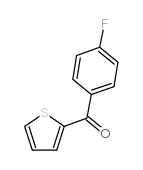
579-49-7 |
| Literature: Zhao, Weili; Carreira, Erick M. Chemistry - A European Journal, 2007 , vol. 13, # 9 p. 2671 - 2688 |
|
~79% 
579-49-7 |
| Literature: Rao, Maddali L.N.; Venkatesh, Varadhachari; Banerjee, Debasis Tetrahedron, 2007 , vol. 63, # 52 p. 12917 - 12926 |
|
~% 
579-49-7 |
| Literature: Advanced Synthesis and Catalysis, , vol. 346, # 13-15 p. 1836 - 1843 |
|
~74% 
579-49-7 |
| Literature: Dunst, Cora; Knochel, Paul Synlett, 2011 , # 14 art. no. S03411ST, p. 2064 - 2068 |
|
~88% 
579-49-7 |
| Literature: Zhou, Qing; Wei, Shaohua; Han, Wei Journal of Organic Chemistry, 2014 , vol. 79, # 3 p. 1454 - 1460 |
|
~71% 
579-49-7 |
| Literature: Akhbar, Ahmed R.; Chudasama, Vijay; Fitzmaurice, Richard J.; Powell, Lyn; Caddick, Stephen Chemical Communications, 2014 , vol. 50, # 6 p. 743 - 746 |
|
~10% 
579-49-7 |
| Literature: Keumi, Takashi; Yoshimura, Kiichiro; Shimada, Masakazu; Kitajima, Hidehiko Bulletin of the Chemical Society of Japan, 1988 , vol. 61, p. 455 - 460 |
|
~% 
579-49-7 |
| Literature: Chemical Communications, , vol. 50, # 6 p. 743 - 746 |
| Precursor 10 | |
|---|---|
| DownStream 3 | |
| HS Code | 2934999090 |
|---|---|
| Summary | 2934999090. other heterocyclic compounds. VAT:17.0%. Tax rebate rate:13.0%. . MFN tariff:6.5%. General tariff:20.0% |

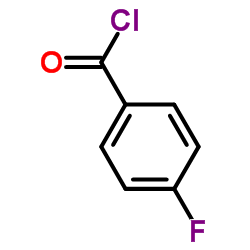

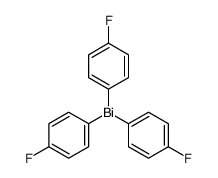
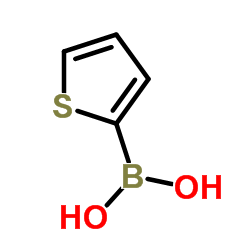

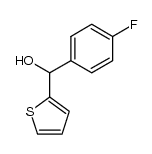

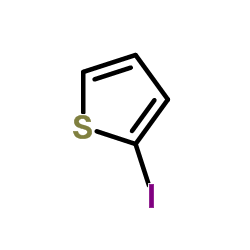

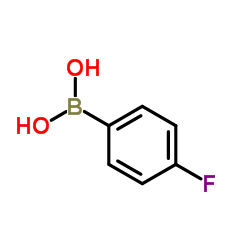



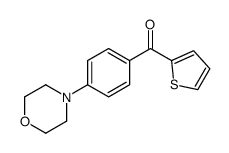
![diethyl methyl[4-(2-thienylcarbonyl)phenyl]malonate structure](https://image.chemsrc.com/caspic/486/52779-57-4.png)
